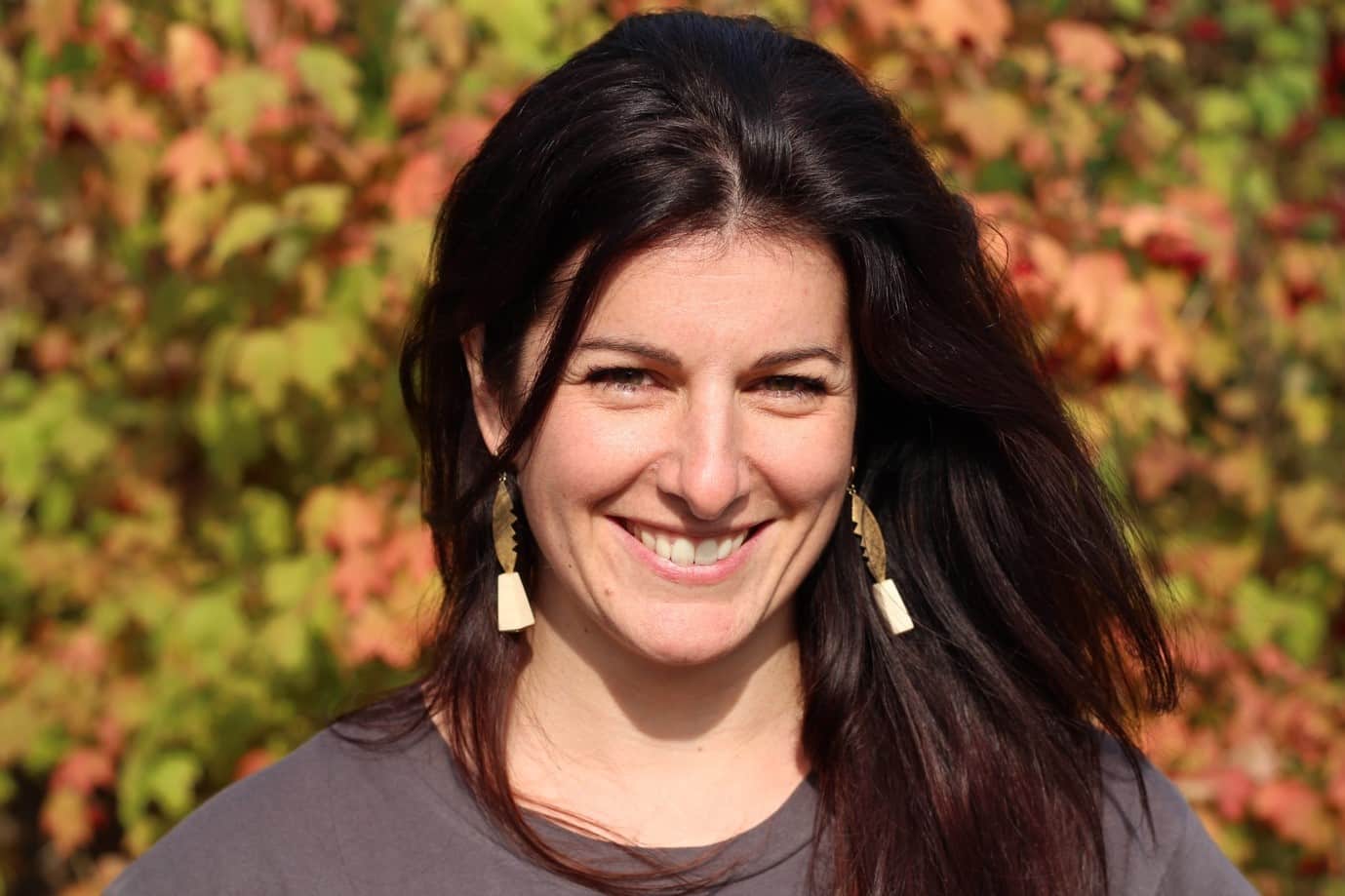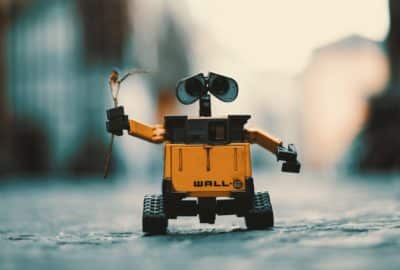What is green steel?
Wednesday 1st Jun 2022, 12.30pm
Steel has become an essential commodity in modern society – used in everything from our cars and our buildings to the cutlery we use to eat our dinner. Unfortunately, the process used to traditionally produce steel (mining iron ore and combining it with carbon in a blast oxygen furnace) releases a huge amount of CO2. So, is there a cleaner way of producing steel? In this episode, we chat to Prof Barbara Rossi about ‘green steel’, and how it could improve the sustainability and resilience of the construction industry.
(Music)
Emily Elias: Steel is pervasive in our society. In fact, we use so much steel that we probably don’t even think about it; from our cars, to our buildings, to our forks. I bet there’s something made of steel in arms-reach right now, but making steel isn’t necessarily the greatest thing for climate change.
So why not make it greener? On this episode of the Oxford Sparks Big Questions podcast, we are asking, what is green steel?
Hello, I’m Emily Elias. And this is the show where we seek out the brightest minds at the university of Oxford. And we ask them the big questions. And for this one, we found a researcher who has a long history with steel and wants to make it better.
Barbara Rossi: So my name is Barbara Rossi and I am an engineer, a structural engineer. I am a professor at the University of Oxford and I research metals, more particularly carbon steel.
And I look at these metals within the construction sector and I look at how I can improve the construction sector, sustainability and resilience.
Emily: How important is steel to the way we live our lives?
Barbara: I could start comparing materials, but just to give you an example, when you speak about any material, one of the properties that we use is Young’s modulus.
Young’s modulus is basically telling how much your material will deform if you put a certain stress, a certain pressure on that material. That number for steel is 210,000 megapascal. It doesn’t tell you anything at this stage, but if you take aluminium, for instance, just that number for aluminium is 70,000. That number for concrete is 30,000 and for timber, it’s 10,000.
So we’re not talking about small differences here. We’re talking about multiplication factors between materials. That is why steel is- well, that is one of the reasons why steel is so incredible and irreplaceable.
Emily: Where does steel come from?
Barbara: So mostly there are two ways to produce steel. The first is based on iron ore, so we have to mine that ore and we have to combine it with carbon in a huge, what is called a blast oxygen furnace, that will eventually give raw liquid steel.
Or we can recycle steel. So still that we have produced and used, for instance, in a washing machine, we can recycle it, in which case we will use an electric arc furnace, which is a huge furnace in which we will mix all kind of scrap from different sectors; construction, automotive, et cetera. And we will just melt that steel with electricity.
Emily: Is there any big difference from the steel that comes from a mill or that is recycled?
Barbara: There is no such difference between steel that is produced using the primary production and steel that is produced using the secondary production. So electric arc furnace, there is no difference between these steels. They are just raw liquid steel, both of them, but perhaps there is a technical constraint that comes with the electric arc furnace.
And that’s, in fact, we are mixing all sorts of steel when we recycle steel. So we are mixing all sorts of metals in a way, including, for instance, copper, that comes from the wiring for instance, so that can lead to additional difficulty.
So for instance we have to use certain ways to produce steel using the electric arc furnace, which will lead to the same quality as the steel that is produced using the primary production route.
Emily: Okay. So when this phrase comes up of green steel, what exactly does green steel mean?
Barbara: So green steel would mean steel that has been produced based mostly on green energy, such as green electricity, for instance. So taking a very simple example, green steel would be steel that is produced through the electric arc furnace and that electric arc furnace would be using green electricity.
So hydropower, the sun, et cetera. Obviously, in this case, the environmental impacts that are associated to production of that steel are very low.
Emily: So why would this be then such like a big deal for climate change if we were just making green steel instead regular, old steel?
Barbara: It’s actually extremely easy to make great steel through the electric arc furnace, but it’s obviously an immense step towards net zero because of the immense amount of steel that we need today for our washing machines, for our dishwashers, for buildings, et cetera, et cetera. The world’s need, the world’s producing more than 2 billion ton of steel per annum. In the UK only we are in need of between 10 million ton and 20 million ton of steel per annum. This is huge.
So it’s a very big deal to be able today to produce green steel. It is an immensely important step towards net zero.
Emily: How many people are then actually making green steel?
Barbara: Not many. (Laughter)
Emily: Why is that?
Barbara: Well it costs money, obviously. So you need- What I said about the electric arc furnace. The beauty of the electric arc furnace is that it’s immediately scalable. So you could build an electric arc furnace today and plug it to the green electricity, you could actually combine existing electric arc furnace with green electricity.
So that’s totally feasible, but it costs money. And it is possibly also a difficult decision for government because there is the primary production of steel today that still exists and obviously cannot possibly decide just like that to stop all primary production of steel; it would cost a huge amount of- well, all these people that are working in the primary production of steel would certainly lose their jobs.
So it’s a difficult decision indeed, but it’s feasible. And it’s done today, for instance, you have SSAB that is currently producing green steel. There are very latest commitments from the French government who is now investing, I think, €1.7 or €2bn in building two completely new sites in France to produce green steel.
So it’s happening.
Emily: What about the big guys like China and the US? Have they bought into the idea of green steel and making these sorts of conversions to the industry?
Barbara: Yes, indeed. So in fact, interestingly, China is currently responsible for producing roughly half of the world’s production of steel.
So we’re talking about 600 million ton of steel per annum. It is obviously immense or overwhelming, but interestingly, they are leading the way towards green steel. For instance, to give an example, they have decided to build 45 new electric arc furnaces to produce hopefully a huge amount of steel based on recycling.
So China is today, I would say, giving a good example towards the production of green steel. In the United States, it’s even more interesting because roughly 50% of the steel that is produced in the United States is produced with electric arc furnaces. So there is a big difference, in fact, between the US and the UK, that in the US, they use their scrap.
So they recycle a lot of metal. They do not export it. They actually use it to make new steel, which is not the case for the UK. So for some reason, we’re just leaking out this massive amount of steel that we recycle every year, instead of keeping it for ourselves and making new products with this recycled steel.
Emily: What do you think is the timeline for starting to see a shift from the more traditional, like, operations of how we get steel to a carbon neutral green steel outfit?
Barbara: My response to that question is in twofold. The first one is, there is no timeline, it has to happen now. If it does not happen now, we will simply face a future where primary production of steel, which will be too costly in terms of environmental impact, will have to disappear.
So we’re going to have to close these modes of producing steel in the UK, so it is inevitable. We have to change our way of producing steel in the UK or we’re going to have to rely on other countries and that other steel that we will buy elsewhere will have environmental impact elsewhere. So the problem is just displaced to another country.
So it’s not a matter of thinking, “When does this have to happen?” It has to happen now. (Laughter) And I don’t have a crystal ball and I cannot foresee the future, but my vision personally is that there is a way for the UK to today, really, bet on a good future, a good future where we would have two to three electric arc furnaces in our country working hard, delivering 7, 8, 9 million ton of steel per annum; it’s feasible.
The UK has a leading position in terms of producing green electricity. It’s only increasing. So even though we would not necessarily today be able to produce all the steel that we need using green electricity, possibly in the future, we would be able to.
So I see a future where we produce our steel with the steel that we recycle every year. And that steel would be green.
Emily: This podcast was brought to you by Oxford Sparks from the University of Oxford, with music by John Lyons and a special thanks to Barbara Rossi.
Tell us what you think about this podcast. You can go to Twitter and tweet us. We are @OxfordSparks. We’re also on Instagram @OxfordSparks or you can just go to our website, Oxfordsparks.ox.ac.uk.
I’m Emily Elias, bye for now.
(Music)
Transcribed by UK Transcription.





